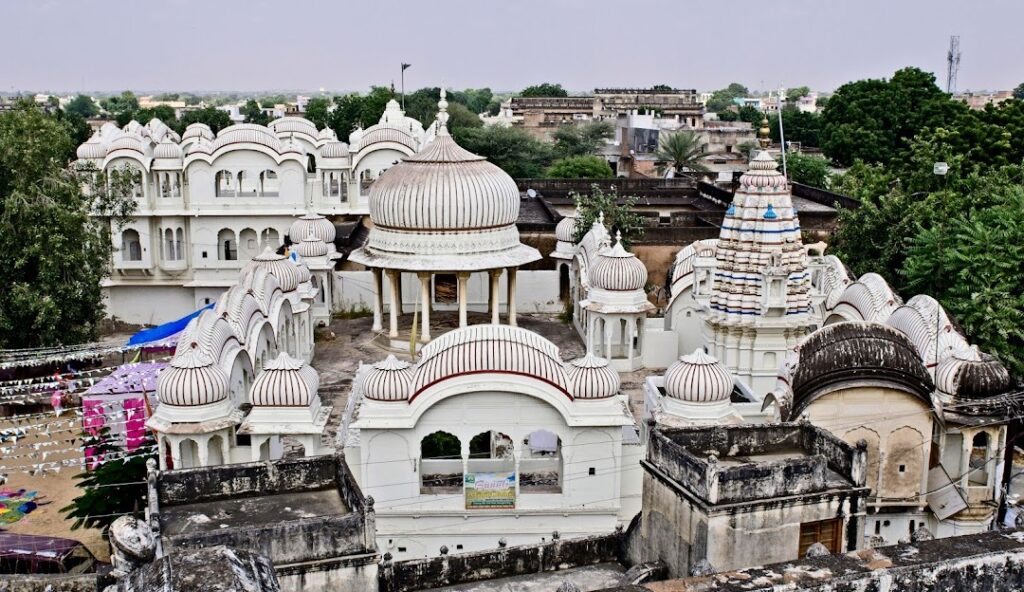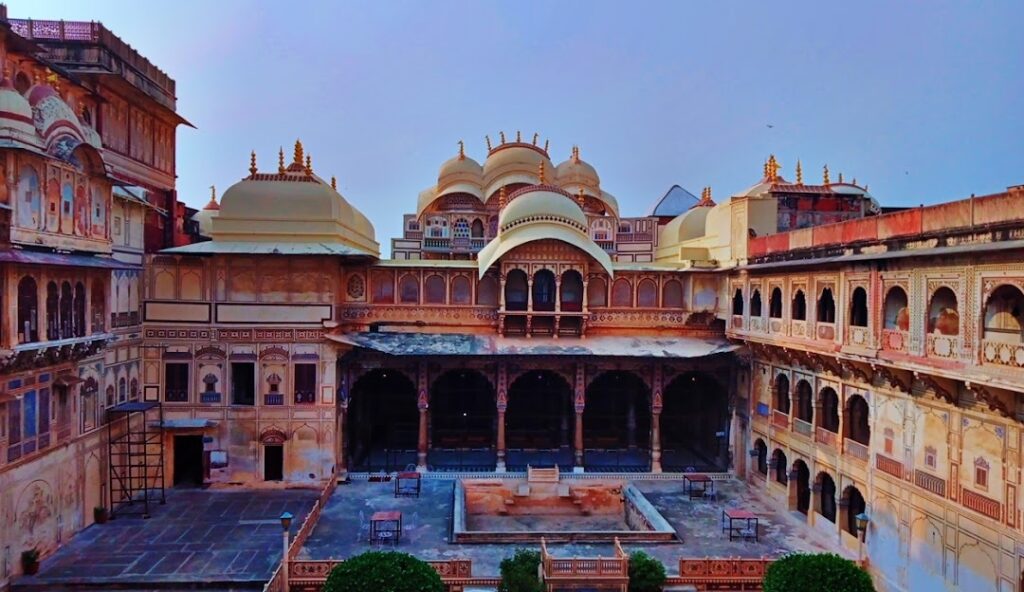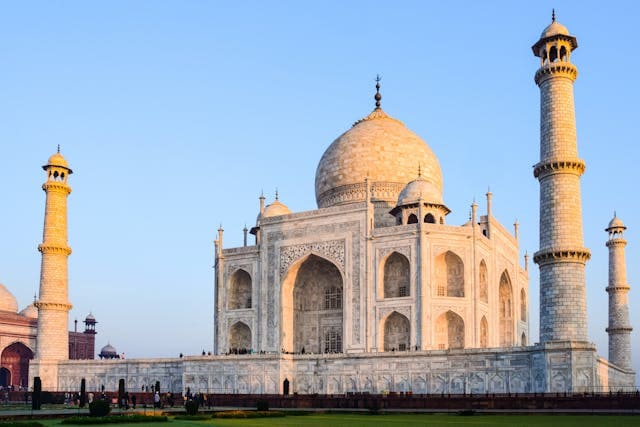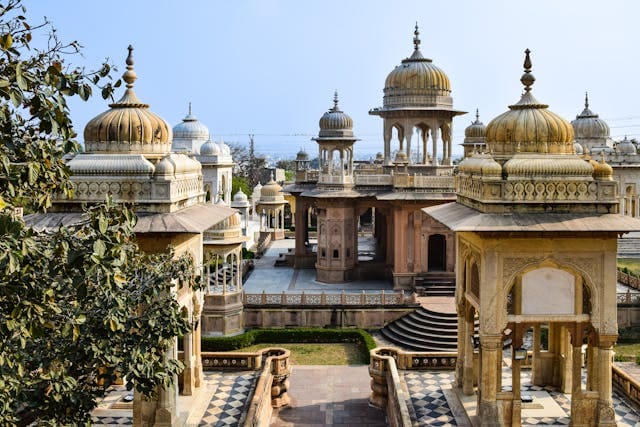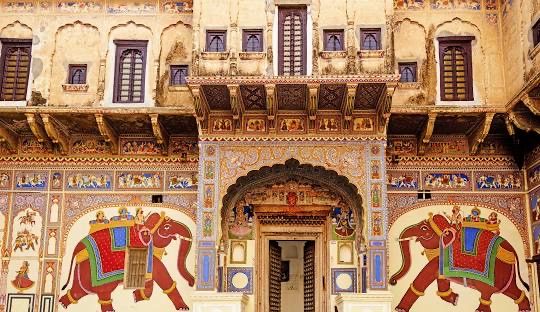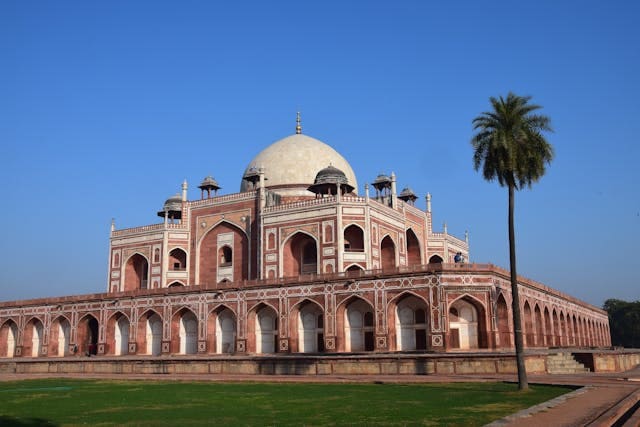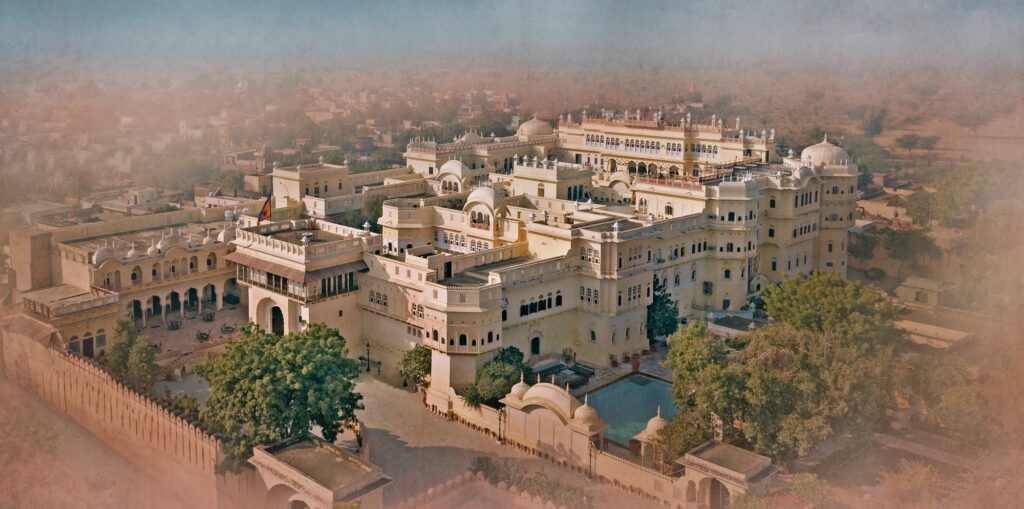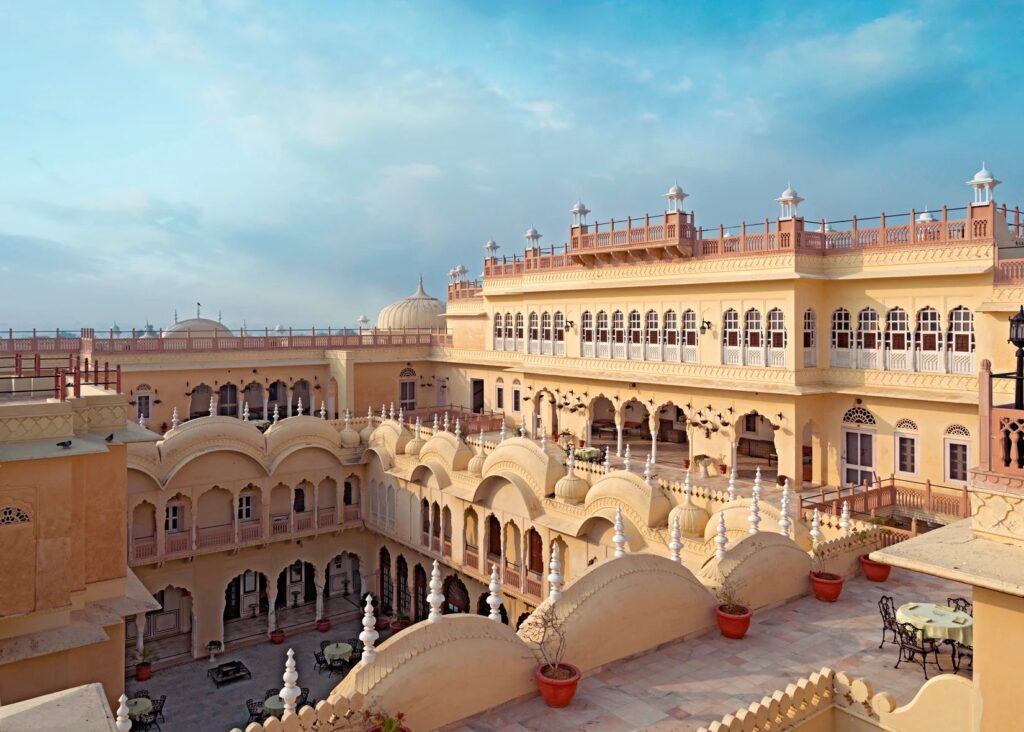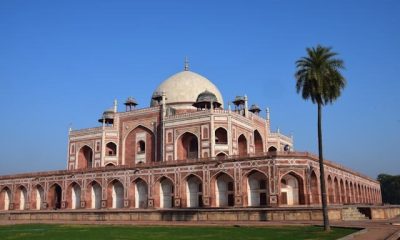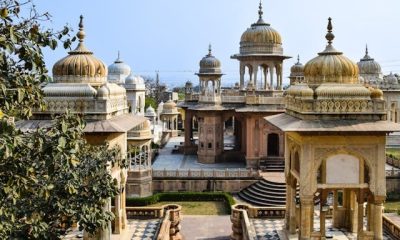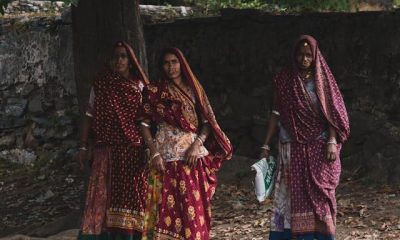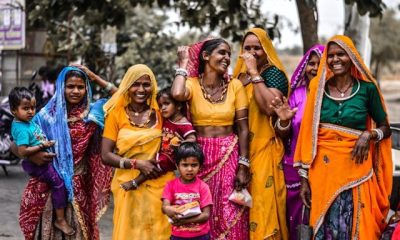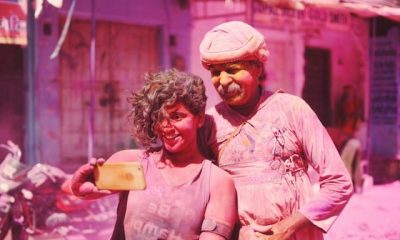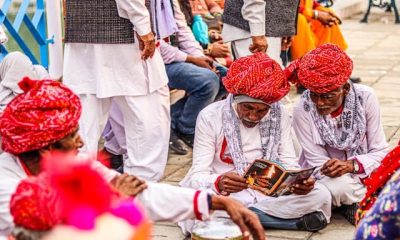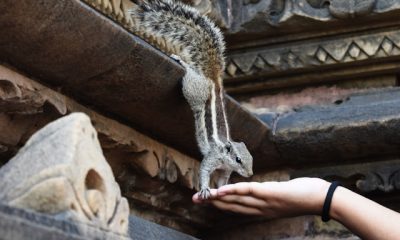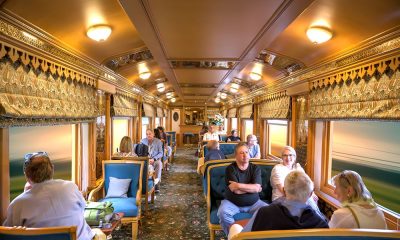Golden Triangle with Mumbai
Embark on a remarkable journey through Golden Triangle India — covering Delhi, Agra, Jaipur, and Mumbai.
This India Golden Triangle Package is a perfect blend of cultural heritage, royal architecture, and modern Indian lifestyle.
Start from Delhi, where history meets modern vibrance. Continue to Agra to witness the timeless beauty of the Taj Mahal, one of the Seven Wonders of the World. Move on to Jaipur, the Pink City, filled with majestic forts, royal palaces, and colorful markets. End your journey in Mumbai, the financial and entertainment capital of India, where colonial charm and coastal life come together beautifully.
Whether you’re a first-time traveler or an explorer of Indian culture, this Golden Triangle Tour with Mumbai offers an unforgettable experience of art, history, and lifestyle — all in one trip.
Trip Highlights
- Visit the UNESCO World Heritage sites — Taj Mahal, Agra Fort, and Qutub Minar.
- Explore Delhi’s famous landmarks – India Gate, Humayun’s Tomb, Red Fort, and Chandni Chowk.
- Experience the royal grandeur of Jaipur’s Amber Fort, City Palace, and Hawa Mahal.
- Enjoy a guided tour of Mumbai, covering Marine Drive, Gateway of India, and Dhobi Ghat.
- Witness the perfect blend of heritage and modern India through this all-in-one India Golden Triangle Tour.
- Comfortable private transfers and expert English-speaking guides throughout the journey.
- Handpicked hotels that reflect authentic Indian hospitality and luxury.
Golden Triangle Tour Overview
- Duration: 8 Days, 7 Nights
- Itinerary: Delhi – Agra – Jaipur – Mumbai
🌟 Exclusive Private Tours (4–12 Guests) 🌟
Experience the essence of India with our thoughtfully curated Golden Triangle Tour, now including vibrant Mumbai. Designed for intimate groups, this journey combines Delhi’s charm, Agra’s wonders, Jaipur’s royal heritage, and Mumbai’s coastal energy. Enjoy a seamless blend of comfort, culture, and authenticity on this iconic route.
📅 Upcoming Travel Dates 📅
15 September 2025 – 22 September 2025
A perfect introduction to India’s Golden Triangle with a coastal twist in Mumbai.08 October 2025 – 15 October 2025
Celebrate festive vibes while exploring India’s historic and modern treasures.01 November 2025 – 08 November 2025
Enjoy the best weather season to discover India’s diversity and beauty.03 December 2025 – 10 December 2025
A winter special combining Mughal grandeur and modern charm.07 January 2026 – 14 January 2026
Begin the new year with India’s top destinations and cultural richness.02 February 2026 – 09 February 2026
Royal palaces, timeless traditions, and coastal delights in one journey.07 February 2026 – 20 February 2026
Embark on an unforgettable journey, rich in history, culture, and celebration.23 February 2026 – 08 March 2026
Celebrate the vibrant Holi festival, blending cultural exploration with joyous celebrations.01 March 2026 – 08 March 2026
Celebrate Holi in North India, followed by a relaxed finale in Mumbai.
Pricing: (UNIT NETT PER PERSON RATES IN USD)
- Each of 02 paying pax double / twin sharing 2175 USD
- Each of 04 paying pax double / twin sharing 1950 USD
- Each of 06 paying pax double / twin sharing 1800 USD
- Each of 08 paying pax double / twin sharing 1675 USD
- Each of the 10 paying pax double / twin sharing 1575 USD
- Each of the 12 paying pax double / twin sharing 1495 USD
- Single Room Supplement 685 USD
Services included:
- Services of an accompanying Tour Guide from arrival to departure
- All ground transportation as detailed in the itinerary using air-conditioned vehicles
- Double/Twin occupancy Room with breakfast
- Monument entrance fees mentioned in the Tour Itinerary
- Rickshaw ride in Old City, Jaipur
- Domestic Airfare from Jaipur to Mumbai
- City tour in Mumbai
- Slum Tour in Mumbai
- Water bottles during the Tour
- Currently applicable Taxes
Not included services:
- Visa application process and fees
- International airfares & taxes
- Camera and Video charges at the monuments where applicable
- Any expenditure of a personal nature such as drinks, tips, laundry, telephone charges, etc
- Insurances (travel cancellation insurance, health insurance, etc)
- Any new tax imposed by the government
- Any chosen optional activity / Program
Highlights Of The Trip
- Visit to the UNESCO World Heritage Site & One of the 7 wonders of the World, Taj Mahal
- Visit the UNESCO World Heritage Site, Qutub Minar in Delhi
- Visit to the UNESCO World Heritage Site, Agra Fort in Agra
- Visit to the World Heritage Site, Jaipur
- Visit to the Bangla Sahib Sikh Temple in Delhi
- Visit an around 1000-year-old Stepwell in Abhaneri
- Slum Tour in Mumbai
| CITY | HOTELS | NO. OF NIGHTS |
|---|---|---|
| Delhi | Vivanta By Taj | 2 |
| Agra |
Grand Mercure
|
1 |
| Jaipur | Shahpura House | 2 |
|
Mumbai
|
Hotel President
|
2 |
*or similar category Hotels.
IMPORTANT:
- Kindly note that the names of hotels mentioned above only indicate that our rates have been based on the usage of these hotels and it is not to be construed that accommodation is confirmed at these hotels until and unless we convey such confirmation to you. In the event of accommodation not becoming available at any of the above-mentioned hotels, we shall book alternate accommodation at a similar or next best available hotel and shall pass on the difference of rates (supplement/reduction whatever is applicable) to you.
- Our offer is based on usage of base category rooms at the mentioned hotels (unless specified otherwise) and if this category of rooms is not available we shall try to confirm accommodation in the next available higher category of rooms and shall advise the supplementary cost involved while conveying the status.
- Airfare for domestic flights may vary at the time of actual booking. The difference in rates (supplement/reduction whatever is applicable) will be updated for you.
ITINERARY
GALLERY / PHOTOS
BOOK A CALL BACK WITH AGENT TODAY
MORE PACKAGES
OTHER TRAVEL PACKAGES
Frequently Asked Questions:
1. What is the Golden Triangle India?
The Golden Triangle India connects Delhi, Agra, and Jaipur — forming a triangle on the map. It’s India’s most popular cultural travel circuit, known for Mughal architecture, Rajputana palaces, and vibrant markets.
2. How many days are ideal for a Golden Triangle Tour?
The India Golden Triangle Package usually takes 6–8 days. This itinerary adds Mumbai for a unique coastal and cultural twist in 8 Days / 7 Nights.
3. What makes this India Golden Triangle Tour special?
This tour combines North India’s heritage and South India’s coastal charm, giving travelers a taste of both royal and modern India.
4. Is the Taj Mahal visit included?
Yes, the Golden Triangle Tour includes a guided visit to the Taj Mahal and Agra Fort, with an optional sunrise tour for breathtaking views.
5. Can I customize this Golden Triangle with a Mumbai tour?
Absolutely! You can personalize the India Golden Triangle Package to include extra destinations like Udaipur, Ranthambore, or Goa.
Book Your Golden Triangle Tour
Discover the magic of India Golden Triangle with an added touch of Mumbai’s modern spirit.
From Delhi’s Mughal wonders to Jaipur’s royal heritage and the timeless Taj Mahal in Agra — this Golden Triangle Tour lets you experience India’s soul in style.
Book Your India Golden Triangle Package Today!
Experience luxury, culture, and color in one unforgettable journey across India’s most iconic cities.



